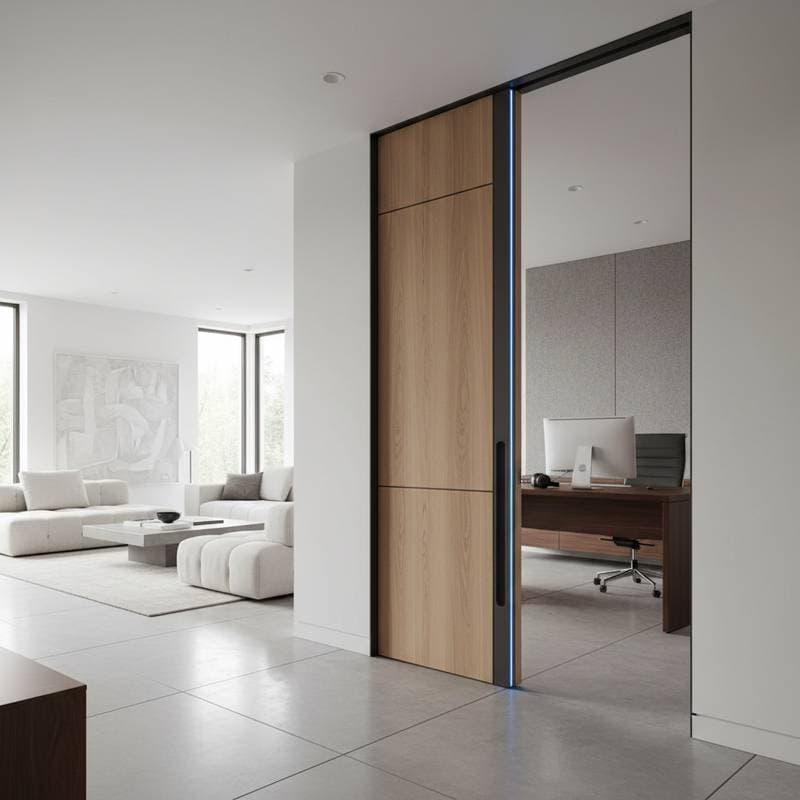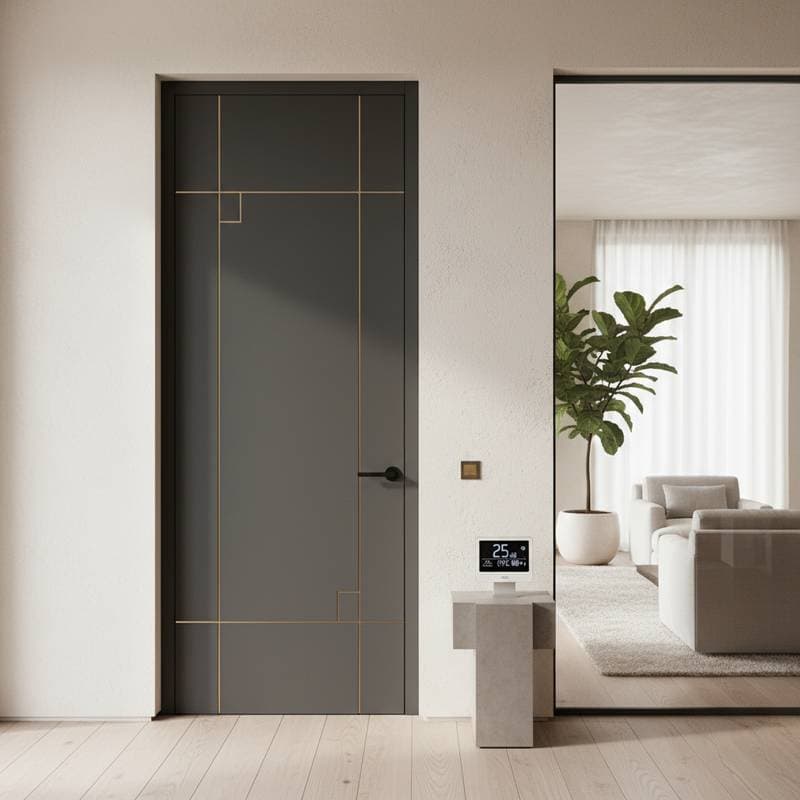How Acoustic Doors Block Up to 50dB of Noise in Modern Homes
Quiet environments have shifted from optional features to essential components of home life. Households increasingly combine professional tasks, leisure activities, and family interactions within shared spaces, making effective sound management a priority in residential design. Acoustic doors that block up to 50 decibels of noise now play a key role in creating these controlled acoustic zones. Their importance extends beyond basic separation to support overall well-being, sustained attention, and daily ease.
Homeowners increasingly integrate sound control into decisions about layouts, finishes, and building techniques. The growth of remote professional setups, expansive floor plans, and dedicated creative areas has elevated acoustic capabilities in discussions of aesthetics and durability. These doors serve as more than barriers; they shape the sensory experience of a room, influencing its ambiance, appearance, and functionality across years of use.
Three Strategies for Achieving Effective Soundproofing
Budget Strategy ($800 to $1,500)
- Material Options: Start with hollow-core doors enhanced by acoustic seals and door sweeps for an entry-level solution. Apply adhesive gaskets around the perimeter and automatic door bottoms to boost noise reduction.
- Efficiency Tips: Retrofit existing door frames to bypass major renovations. Select standard dimensions and prefinished surfaces to minimize expenses on bespoke work.
- Key Investment Areas: Prioritize high-quality seals and precise installation. Superior acoustic materials lose effectiveness if even small gaps persist along the edges.
Mid-Tier Strategy ($1,500 to $3,500)
- Material Combinations: Choose solid-core wood doors incorporating acoustic foam inserts or laminated internal layers for substantial noise attenuation without excessive weight.
- Essential Enhancements: Select magnetic seals and advanced threshold mechanisms. These components improve both acoustic isolation and airflow management.
- Design Priorities: Opt for veneered surfaces in oak, walnut, or maple to introduce natural warmth and depth. Pair with hardware that aligns with surrounding interior elements for seamless visual harmony.
Premium Strategy ($3,500 to $7,000)
- Advanced Material Selections: Use multi-layered engineered doors featuring lead infills or dense composite cores for superior noise suppression akin to professional installations.
- Luxury Finishing Touches: Incorporate custom veneers, hidden hinges, and embedded seals for a seamless appearance in high-end settings.
- Enduring Benefits: These doors withstand decades of use with routine maintenance. They elevate property appeal by introducing commercial-level performance into residential contexts.
Essential Maintenance Practices
Acoustic doors demand little daily attention, yet their efficacy hinges on the condition of seals and components. Examine perimeter gaskets and automatic bottoms every few months for signs of compression or deterioration. Replace any seals that have stiffened or separated from the frame to restore full performance.
Clean wood veneers and painted exteriors using mild soap and water solutions. Steer clear of harsh abrasives that might scratch surfaces or create tiny fissures along borders. In humid environments, monitor for expansion or distortion that could undermine acoustic seals.
Engineered cores prove more resilient than solid wood in areas with elevated moisture or near coastlines, as they resist dimensional changes. Apply lubricant to hinges and latches periodically to ensure uniform closing force, which sustains both noise blocking and effortless movement.
Aligning Finishes with Room Aesthetics
Effective soundproofing integrates seamlessly with visual elements, where door finishes can set the tone for an entire space. Consider these enduring color schemes to harmonize function and form:
- Warm Natural Tones: Honey oak, maple, and light walnut foster an inviting feel suitable for communal areas and workspaces.
- Refined Contrast: Matte black or charcoal against pale gray walls accentuates a contemporary, structured vibe.
- Crisp Neutrals: White or ivory options brighten compact rooms while preserving sharp outlines.
- Rich Depth: Espresso and deep mahogany add elegance to reading nooks or entertainment zones.
- Soft Industrial: Pair brushed steel accents, subdued taupe surroundings, and light wood for a blend of comfort and edge.
Balance door colors with window frames and exterior cladding for cohesive flow. A darker interior door against light outer materials generates dynamic appeal, whereas aligned shades promote tranquil unity throughout the home.
Incorporating Acoustic Doors into Comprehensive Home Upgrades
View acoustic doors as integral to a home's overall sound barrier system. Pair them with soundproof windows, insulated partitions, and airtight vents to maximize isolation. In open layouts, position these doors at key junctions, such as corridors leading to bedrooms or dividers between social and private zones.
For dedicated media spaces or creative studios, combine doors with absorptive wall treatments and rugs to minimize reverberations. In professional areas, add heavy drapery or acoustic ceiling panels to sustain productivity.
Uniformity across elements proves crucial. One robust door alone cannot compensate for permeable walls or unrestricted airflow. Holistic enhancements yield the profound tranquility that residents seek.
Preparation Checklist for Acoustic Door Selection
Compile these details prior to choosing and installing an acoustic door to inform decisions and streamline the process:
- Photographic Documentation: Take interior and exterior images from various perspectives to assess illumination, molding, and current surfaces.
- Design Style Assessment: Determine if the residence favors modern, classic, or hybrid aesthetics, which guides frame and fixture selections.
- Regulatory Considerations: Review local community guidelines or homeowners association policies on materials and appearances, particularly for prominent entrances.
- Environmental Factors: Account for humidity levels, saline exposure, or climate variations that impact material durability and seal endurance.
- Financial Boundaries: Establish clear spending caps early to prevent unnecessary customizations during evaluations.
- Targeted Priorities: Identify rooms requiring the highest noise control to direct resources effectively.
This groundwork facilitates clear exchanges with installers and vendors, guaranteeing that acoustic performance and stylistic fit align with goals.
Realizing Quiet Through Integrated Design
Acoustic doors have evolved from niche applications in recording facilities and offices to staples in contemporary residences, where they deliver both practicality and appeal. Blocking up to 50 decibels transforms standard areas into havens of calm, fostering sharper focus, deeper rest, and enhanced health.
Optimal outcomes arise from harmonizing appearance and utility. A refined walnut overlay might encase cutting-edge sound-dampening layers, with understated framing and sturdy fixtures rounding out the ensemble. Selected for offices, sleeping quarters, or artistic workspaces, these installations reflect skilled execution, robust materials, and deliberate placement to achieve enduring serenity.
True quiet enables presence, seclusion, and ease in everyday living.






